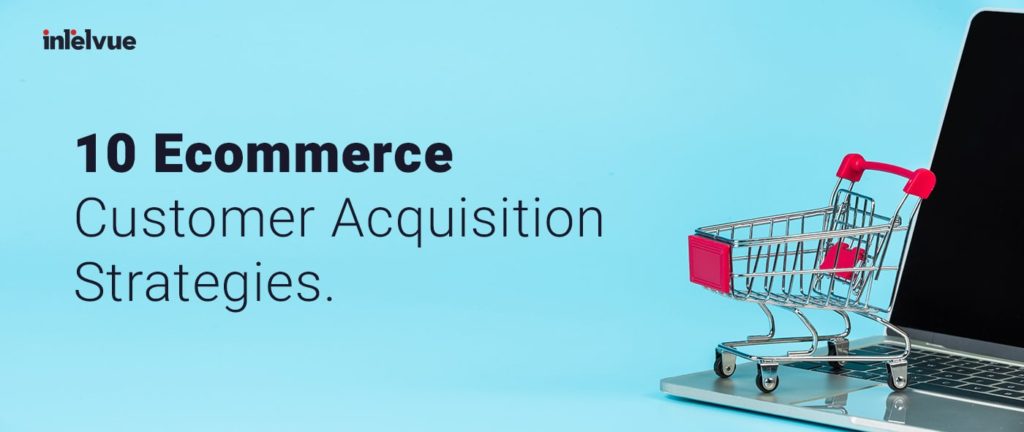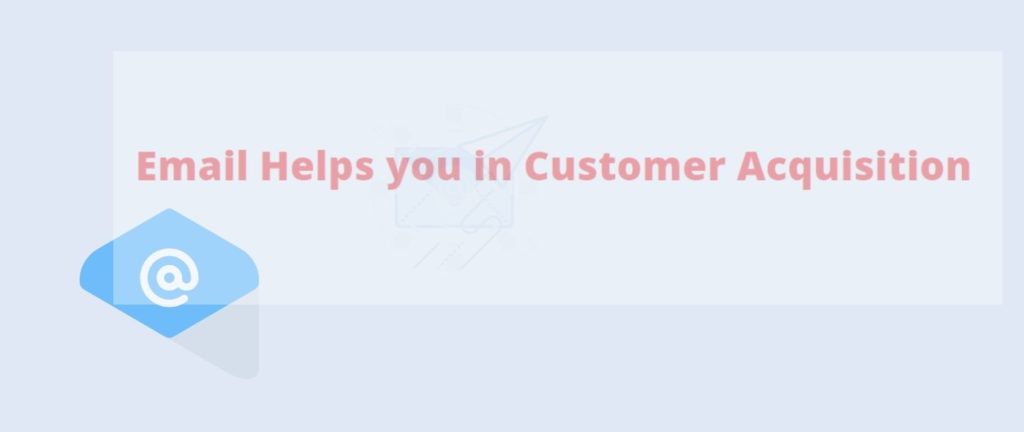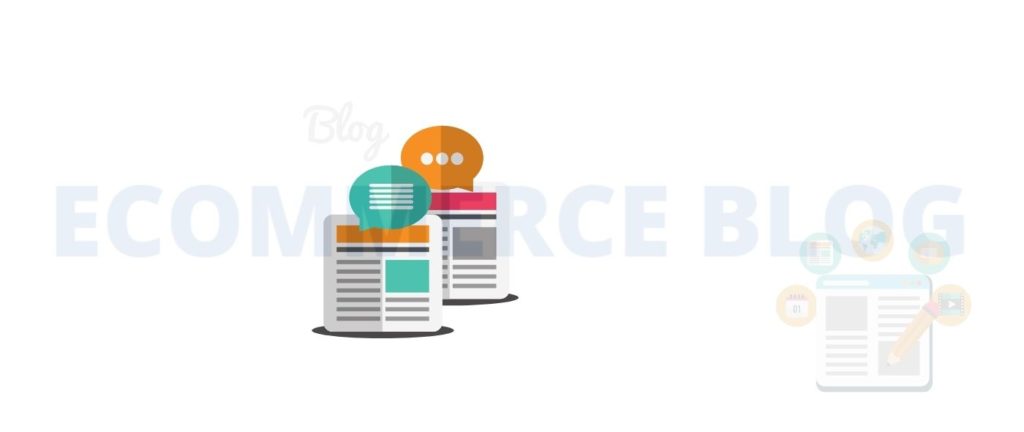
These eCommerce customer acquisition strategies will create shinning spot for your online store and will give you countless sales, leads, conversions, and money in 2021 and beyond.
To develop your turnover from your online store, it is essential to retain your existing customers while activating marketing levers to conquer new ones.
For this, I strongly advise you to put in place strategies to increase traffic to your online store. The more Internet users will be on your pages, the more you will increase your chances of conversion.
On the web, there are many ways to get noticed. Here is an overview of effective ecommerce customer acquisition strategies to put in place for your online store.
Top 10 ECommerce Customer Acquisition Strategies
Here are the top 10 effective ecommerce customer acquisition strategies for your digital store to get customer retention in 2021 and beyond.
1. Natural reference
Natural referencing, also called SEO, is undoubtedly the first acquisition lever to put in place to get people talking about you.
Its principle? Work on the content of your site to improve its visibility in search engine results, and in particular on Google.
By adding text on your home page, your category pages, your product sheets, or even by writing blog articles, you improve your positioning and facilitate the understanding of your theme for search engines.
All of this content will allow you to attract more traffic to your site while improving the experience of your users. Your leads will also be more qualified.
The idea is to offer as much informative content as possible to your customers to promote your inbound marketing strategy.
Unlike traditional marketing, inbound marketing does not reach out to the customer but encourages them to come directly to you by offering them useful content.
In this sense, working on the SEO of your e-commerce also allows you to display yourself as an expert in your field, which is all the more rewarding and significantly promotes users’ trust in you.
So, whatever your sector of activity, natural referencing is a vital step in your success!
2. Paid SEO is one of the popular ecommerce customer acquisition strategies
Search Engine Advertising or SEA is a paid referencing solution. It is one of the web marketing tools that lead the most qualified visitors to a Website, given that the surfer is in an active search phase.
Paid referencing represents, for example, sponsored links, paid according to the number of clicks made by customers and based on an auction system.
This marketing practice available when creating campaigns on Google Ads consists of choosing and paying for the keywords on which you want to be ranked.
Depending on the competition on these “keywords”, the bids go up, and the cost per click rises.
The more relevant the chosen keywords are to your business, the more they also offer significant benefits.
To further improve the return on investment of your SEA strategy, also consider remarketing. This is a formidable weapon to improve your conversion rate.
This acquisition strategy consists of tracking down your visitors and relaunching them after they come to your pages.
Did you know: three-quarters of Internet users may never come back to your site after having visited it once.
Retargeting helps reduce this dropout rate by reminding you of their good memories. Thanks to it, your potential customers will no longer escape you!
3. Social networks helps in customer acquisition
A precious mine of information and potential customers, social networks are also an excellent lever and popular ecommerce customer acquisition strategy.
Widely used in our time, they make it possible to reach a large audience and offer more and more functionalities for social commerce.
They are, therefore, a relevant promotional and commercial animation platform for your e-commerce.
For social networks to be effective and your ads to be noticed, however, try to choose your medium according to your target.
For example, women are very attracted to Pinterest. On the other hand, if your target is more professional, prefer social media like Twitter or Linkedin.
For the general public, Facebook remains the priority platform, just like Instagram.
The new generation is, for its part, more present on TikTok, YouTube, or Snapchat.
On the other hand, you are aware that the competition is very tough on social networks and that there are relatively few advertisements there. So try to target your audience and deliver the right message at the right time, making yourself as attractive and impactful as possible.
Likewise, contests on social networks are an outstanding method to energize your community, retain your customers, and win new ones.
4. Email Helps you

Email marketing is another very complementary process to the acquisition strategies mentioned above.
It fits perfectly into a process of loyalty and customer recovery. There are multiple objectives to send emails such as:
- Promote your brand;
- Create a link with its customers;
- Promote a product;
- Relay information about an article;
- Disseminate special offers;
- Promote your pages on social networks;
- Send personalized promotions;
- Etc.
As you will have understood, anything can be a pretext for sending an e-mail with the sole objective of improving your traffic.
On the other hand, here again, to set up an effective emailing campaign, it is essential to have a qualified customer file and a well-stocked database.
To do this, do not hesitate to encourage visitors to your site to subscribe to newsletters or to run contests. This allows retrieving a maximum of e-mail addresses. Also, note that databases can be purchased.
Inexpensive, the emailing campaign generally offers too good a return on investment.
On the other hand, try not to invade your customers with emails, at the risk of tiring them, and it becomes counterproductive.
5. Blog

Integrating perfectly into an inbound marketing strategy, the blog makes it possible to offer Internet users quality IT content.
By being fed regularly, also places you as an expert in your field.
Participating in improving your SEO on search engines attracts new visitors while increasing their confidence in your business.
You are still not convinced of its effectiveness, and you still wonder why you should start a blog? Here are some data that should convince you:
- Writing a blog associated with an online store increases traffic 15-fold compared to other sites that do not have one;
- 70% of consumers believe that they learn more about the business from their blog than their advertising.
- 61% of internet shoppers have already purchased after reading a blog post.
- Companies with a blog have four times more pages indexed by Google than others.
So, Still skeptical?
6. Marketplace
Another way to boost your visibility on the Internet: marketplaces!
These are used by 32% of e-merchants, quite simply because they allow them to increase their visibility.
While it is a very competitive medium, highlighting many traders specializing in the same industry as yours, marketplaces are also an excellent way to be seen and attract qualified prospects.
If marketplaces force you to offer lower prices and they also take a commission on sales made, they are an excellent solution to make volume and increase your turnover quickly. They are a very good bridge while waiting to gain independence.
Note also that all customers of the Wizishop e-commerce solution benefit from privileged and free access to the Amplify network, comprising 10 thematic marketplaces, 100% French. Enough to improve your visibility easily and quickly to make you noticed!
7. Influencers
More and more popular influencer marketing relies on a person’s notoriety and the articles they decide to recommend.
It is about using influencers, present on social networks, to promote some of your products or services.
If an influencer decides to support your brand, it can significantly boost your brand awareness.
Influencers are highly potent lever to make you known or strengthen your image, provided of course you know how to choose them.
Do not necessarily choose an influencer according to his number of views for your product placements but favor one who has a qualified audience in perfect agreement with the products you offer.
8. Growth Hacking
Growth Hacking is a term that may seem technical and which is undoubtedly less popular than the other acquisition strategies mentioned above.
In general, these are all the practices and techniques that are used to ensure the rapid growth of a product or service on the Internet.
In this area, all the means to achieve its ends are goo, even if they are unconventional practices. The permanent goal is to aim for exponential growth with your online store.
Moreover, Growth Hacking is used to increasing its number of users to increase its growth very quickly.
In this case, there is no school for this specificity. Growth Hacking is a different way of thinking that translates into constant testing and research to market your business.
5 Stages of Growth Hacking for customer acquisition
Growth Hacking relies on five successive stages representing the AARRR funnel:
- Acquisition: find any solution to attract Internet users and increase traffic to its pages.
- Activation: implement strategies to activate the visitor, such as adding the product to the cart.
- Retention: Keeping your users active and using your services regularly.
- The referral: make every effort to ensure that your active users become ambassadors of your services and make the word of mouth work.
- Income: turn active visitors to your site into revenue. This is also the monetization stage. This is where your prospects truly become your customers.
The objective of Growth Hacking is to increase the number of visitors and active users, before thinking of profit, to ensure the sustainable growth of the company.
It is only once users are deemed sufficiently active that the work of monetization can begin.
9. Affiliation
Affiliation is a strategy for promoting your products through other site publishers on the same theme.
This acquisition strategy consists of registering your site on dedicated platforms or creating your program to allow others to promote your products.
Through tracked links that lead to your site, these publishers will earn a commission when a sale is made.
It’s up to you to define a commission adapted to your products and interesting for publishers.
10. Buyer’s Guides and Price Comparators
Finally, buying guides or price comparators on the Internet are sites that allow Internet users to compare different products with each other.
For the same product, several sites are presented. They are generally classified by increasing prices so that the buyer benefits from the best price available on the web.
Being present on buying guides or comparators is an excellent way to promote performance and make yourself more visible.
On the other hand, to appear competitive in the eyes of customers, you have to offer attractive prices. It is, therefore, a very good lever for activation, provided that a suitable margin is recovered.
Of course, all these strategies are complementary to each other. It is up to you to select those which seem the most judicious to you because of your activity.
You are free to choose your marketing levers according to your objectives, your universe, and your target. Whatever your acquisition strategy, make sure that the most important thing is not quantity but rather quality.
Try to be noticed by qualified visitors as much as possible. Send them the right message at the right time, through the right channel. These ecommerce customer acquisition strategies will grow your online business!